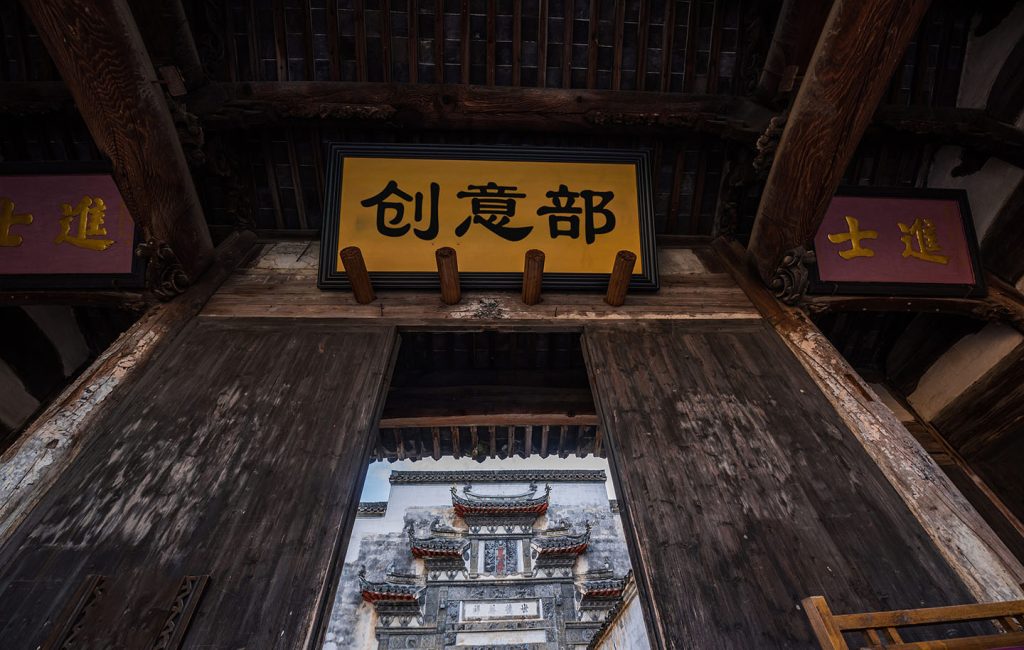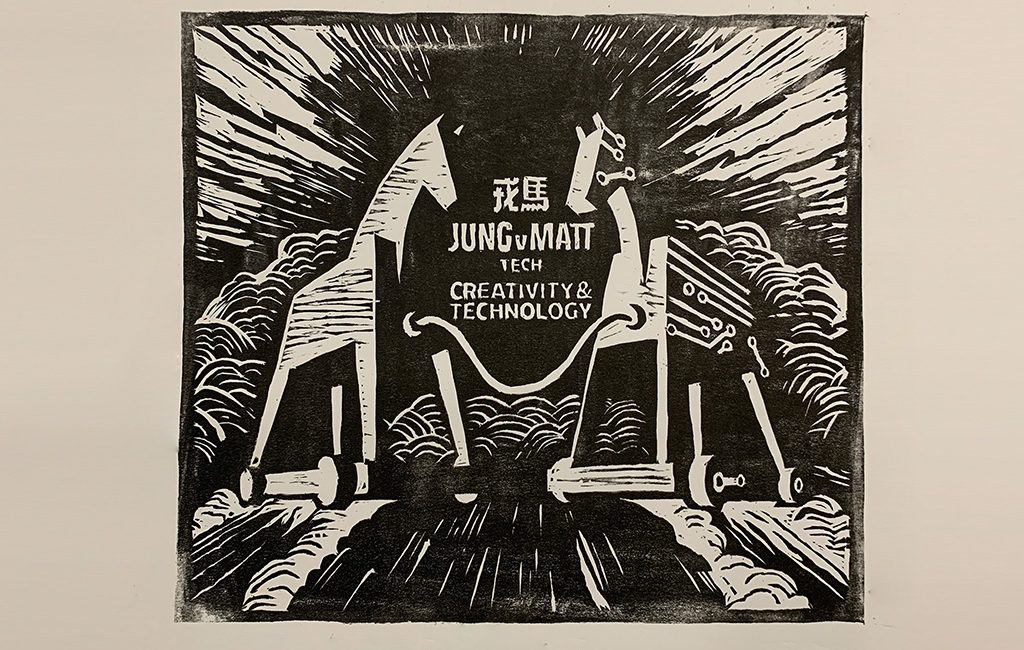
How to structure a 30+ creative team in China?
A group of 5 is easy—just work and eat together. But with 30, it’s complex.
Structure: Flat or hierarchical?
Project Allocation: Based on workload or capabilities?
For experienced managers, these are basics. But "creative" and "Chinese" add complexity.
Conflict: Creativity vs. Traditional Chinese Values
We can't merely analyze "creative" and "Chinese" separately. Setting aside national pride, creativity and traditional Chinese values often conflict.
Creativity needs equal expression, tolerance for varied perspectives, and protection for unconventional ideas.
China, at its cultural core, is a vast imagined community rooted in ethics. It values a hierarchical, clan-like structure. Furthermore, China is a relationship-driven society. Managing with rules alone won’t work. Phrases like "Don't tell me the rules, only my leader’s word matters" resonate, demonstrating that in many instances, the "Rule of man" compensates where the "Rule of law" falls short.
Creativity needs time, but efficiency reigns in today’s China. Traditional processes are becoming obsolete.
China’s creative practices borrowed from the West, but times have changed.
Regarding a flat team structure:
Low efficiency and quality
In a flat structure, only top leadership controls direction and quality. Junior staff, without prompt feedback, may see work quality and efficiency decline.
Weakened team bond.
A flat structure weakens each team’s sense of unity.
Stunted team development
Lack of leadership roles for experienced creatives and minimal guidance for newcomers slows overall team progress.
Work Distribution Approach:
Core projects and routine tasks are measured in hours and delegated to respective groups or individuals. If overloaded, surplus work shifts to someone else. If no one is available, the Traffic team resorts to freelancers. Though structured and considerate, this system has its challenges.
Impractical
Creatives aren’t on a factory assembly line. Initial plans often deviate from reality. With frequent project cancellations and unexpected new projects, the plan can quickly become a farce.
Low quality
Continual shifts in project ownership leave team members feeling disconnected and lacking accomplishment. The constant reshuffling undermines group cohesion and beneficial competition, resulting in subpar work.
Lack of flexibility
Overplanning reduces the flexibility needed to adapt to China’s rapidly evolving landscape.
How do we make "creative" more "Chinese"?
Team Structure: Think of the creative department as a "clan," with distinct "families" bound by the creative culture.
1. Leadership: The ECD acts as the "patriarch of the clan," guiding the department, managing "family heads," and coordinating with other departments and external entities.
2. Families: Each "family" includes 1 or 2 mid-level creative managers — the “parents” — leading their creative units. The size of each "family" flexes based on the "parents'" management capacity.
3. Juniors: Junior creatives are the "children" of the "family," tasked with learning and delivering.
Work allocation:
The "Patriarch" delegates core projects to each "Family," ensuring responsibility rests with "families" rather than individuals. If a family member is on leave, others temporarily shoulder their duties, ensuring continuous ownership and accountability.
Routine tasks are equitably distributed by traffic. Freelancers handle execution tasks, barring special requirements.
Each "family’s" workload isn't incessant; downtime is allocated for continuous learning.
"Families" demonstrating outstanding performance earn precedence for pivotal projects, promotions, and salary increments, fostering healthy competition.
In the creative industry, human-centricity is key. Placing faith in human nature rather than rigid rules is beneficial. Understanding this ethos helps harness organizational strengths to curate an exemplary creative team.
如何在中国建构一个30人以上的创意团队?
当你领导一个5个人的创意小组,你只需要每天和大家一起吃饭,一起加班就可以了。但当你要构建一个30人的创意团队,事情就变得复杂起来。
采用什么样的结构?扁平一点的还是层级分明的?
如何分配项目?是按工作量平均分配还是按组分配?
对有经验的管理者来说,这还都是基础问题,但当在这些问题上加上“创意的”和“中国的”这两个变量之后,答案就变得复杂了。
“创意的”与“中国的”的“冲突”
不能简单把“创意的”和“中国的”这两个变量拆分来解析,抛开民族主义情绪来说,这两个变量在管理问题上产生了某种意义上的冲突。
创造力需要平等的表达,对不同的声音的包容,和对新奇怪异的想法的保护,不管这想法来自资深还是刚入门的成员。而中国是个建立在伦理基础上的巨型想象共同体,整个社会模仿“宗族”和“家庭”结构建立了稳固的等级化结构,这是深植入中国人深层意识中的。
同时中国社会是个关系型社会,你不能仅靠规则管理中国员工。“别跟我讲规则,我只听我领导的。”“人治”在很多情况下可以补足“法治”中的不足。
创造力需要时间,创意人需要可以浪费时间和自我推翻的权利。但在效率优先的当前中国社会,我们得不到过去西方传奇创意大佬们的特权了。过去那套典型的创意流程的灵活性差且极易被市场淘汰。
中国最初的创意产业是从西方引入的,运行方式也是。但最近我们多少感觉这种运行方式好像不那么有效了。
首先我们看团队结构:
一般认为创意人需要空间和自由,所以我们让团队尽量扁平化,这看上去既鼓励个性发展又摩登洋气。但实际操作中遇到以下几个问题:
- 低效、低质
扁平的团队结构意味着方向与质量把控都完全指望顶层领导者。由于中层创意管理的缺失导致的初级创意成员不能得到及时反馈降低了整体效率和质量。不断引发的质量危机进一步拖累整体效率。
- 凝聚力弱
扁平的团队结构减弱了固定小组的存在感及同一组内成员之间紧密度。
- 团队成长速度慢
资深创意缺乏领导力训练与实践,初级创意得不到足够的指导。这让团队成长缓慢。
其次,让我们看工作分配制度:
基于平均原则的工作分配制度将核心项目和日常工作全部量化成工作时长,然后把工作小时数平分到每个组或个人身上,当其中一个人或小组工作超载,则把多出来的工作调剂到其他人,如果还有额外的工作则找外部资源。这种工作模式看上去有序而有人情味,但落到现实中有以下几个弊端:
- 不切实际
创意不是在工厂的流水线上工作,计划时间往往和现实相差甚远,导致不同项目之间关于创意资源的冲突不断。密集而紧凑的工作安排让成员没时间搜寻和学习新事物,最终导致创意理念及手段的过时。
- 低质
项目负责人的经常性变化让成员对项目缺乏责任心和成就感。不断变动的合作关系减弱了各小组内部凝聚力及组与组之间的良性竞争,最终导致作品低质。
- 灵活性差
过度计划性导致灵活性不足,不能适应中国快速变化的现状。
如何将“创意的”与“中国的”融合起来?
是否可以通过参考中国的“宗族”和“家庭”的模式,来更好的构建一个大的的创意团队呢?
在团队结构方面:
整个创意部就像一个“宗族”,在其中的多个创意小组就像多个“家庭”。创意部的文化是整个“宗族”内的纽带。
“宗族”整体的规模由部门总体业务量决定,每个“家庭”要保证小规模的同时又有层级,使之既不人员冗余,又运行高效。
1.创意部高层管理者像“族长”;他们的工作是导引整个部门的方向,通过对多个“家庭”中“家长”的管理实现整个部门的运行。与其他部门及外部资源对接协调也他们重要的工作部分。
2.在每个“家庭”中必须有一到两个具备独立创意能力的中层创意管理者,就像每个“家庭”中的“家长”。他们是每个具体项目的主要责任人同时肩负着领导自己创意小组的职责。每个“家庭”人数以“家长的抚养能力”灵活增减。
3.初级创意人相当于小朋友或年轻人,做事情和学习是他们的最重要任务。
在工作分配方面:
“族长”将核心项目分配给各个“家庭”,“家庭”将替代个人成为项目的责任主体。不管有多少轮修改和工作量,均由本“家庭”负责到底。如果“家庭”中某个成员休假,“家庭”中其他成员则自动接手其工作,并在其休假后交回。从而保证项目归属的一致性和团队成员对项目的责任心。
日常的执行工作则由族长助手平均指派给各家庭。外部资源的使用也将更多侧重于日常执行工作(特殊需求除外)。
各个“家庭”的工作不是一直都很满的,闲余的时间要留给成员去学习新的东西,而不是过度用小的执行工作填充它。
表现优秀的“家庭”可以得到重要项目的机会及升职加薪的偏重。从而建立团队内部的良性竞争氛围。
创意行业是一个和人相关的行业。与其相信规则,不如更相信人性。而中国式的“家族”与“家庭“结构本身就是基于最基础人性关系的。中国人有自己的行为方式,只有透彻洞察这一点,才能真正发挥组织的系统优势,组建一个优秀的创意团队。


